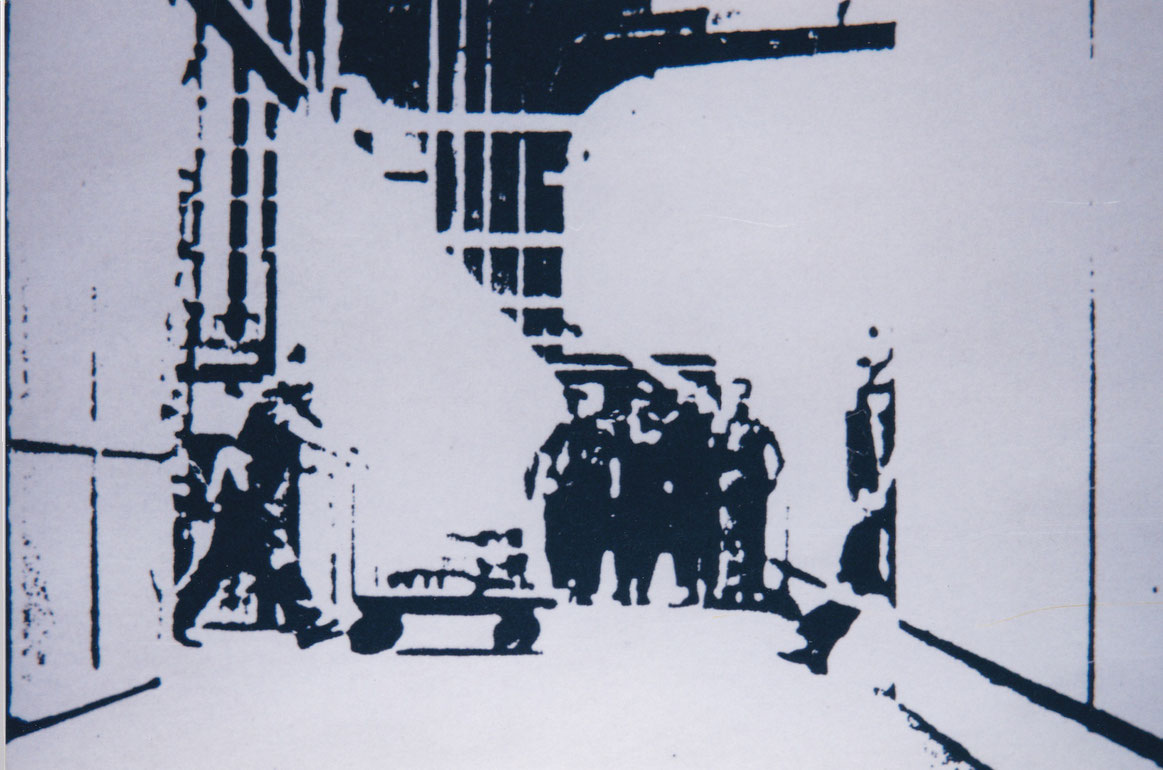La Sortie
The first film of cinematographic history shows workers leaving a factory. The title of this work which is 50 seconds long and bequeathed to us by the Lumière brothers is La Sortie des Ouvriers de l´Usine.
There are three known versions of the work. In the hardware and software of the cinematographic "machine" resides much of the specifically mechanical charm of the industrial age. In one sense it is a paradox that the Lumières began film history with workers leaving the factory instead of giving place of honour to them working on the production lines. Over a hundred years later Siegfried A. Fruhauf has made a fourth version of La Sortie des Ouvriers de l´Usine. This remake gives short shrift to the unconscious irony of the Lumière films. Fruhauf needs six minutes to run through the current fate of industry. Fourteen workers are present here - five on the (optically) vertical axis, the rest cross the horizontal axis in the background. Their movements form a cross - a symbol of death as a ballet méchanique.
The initial image is transformed into almost abstract black and white surfaces, harnessed, Sisyphus-like, to a lunatic dance of repetition. Fruhauf increases the acceleration of the striding workers in discrete steps until they are tearing along - the capacity of the film tested to its outer limits - until it can´t take any more. Maximum acceleration leads to stasis - after the acceleration throughout the film comes the logical consequence - the last frame - the freeze frame. Nothing more can happen. The model (literally) of progress collapses. And instead there is paralysis. A dead end. The workers are motionless, and with them the factory.
Rien ne va plus.
(Peter Tscherkassky)
La Sortie ironizes one of cinema’s original motifs: Under Fruhauf’s expert hands, just as in the people’s real history, the workers will never manage to leave the factory; instead of escaping into off-screen space, as in the initial three stagings by the Lumière brothers, their movements from foreground to background and simultaneously from left to right and right to left form a plastic cross which refers to the death of manual labor in factories, the figurative erasure of its working class, and the death of cinema. In other words, after the harmonious mise-en-scène of the Lumières who invented an appeased everyday comes a critical elegy.
(Nicole Brenez)

